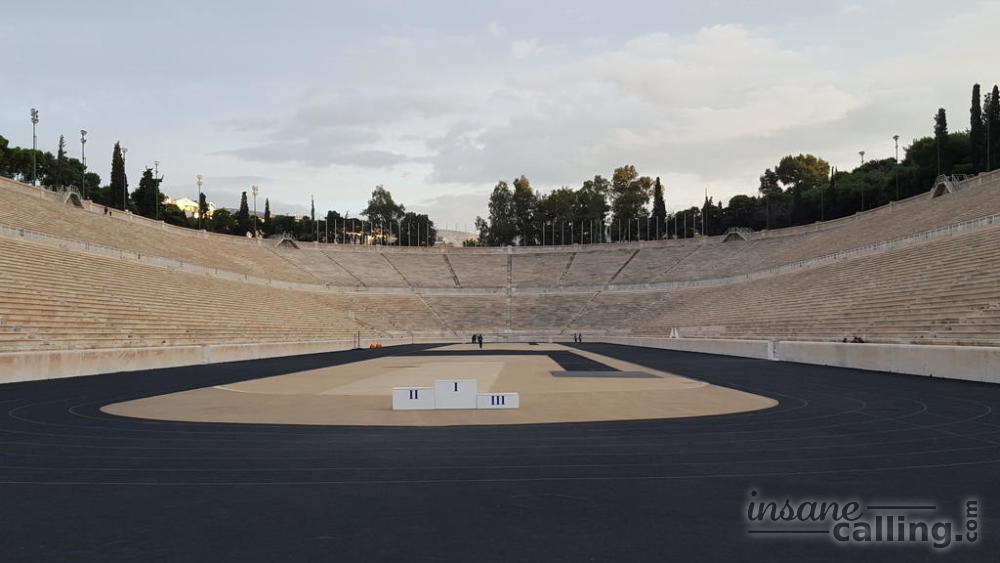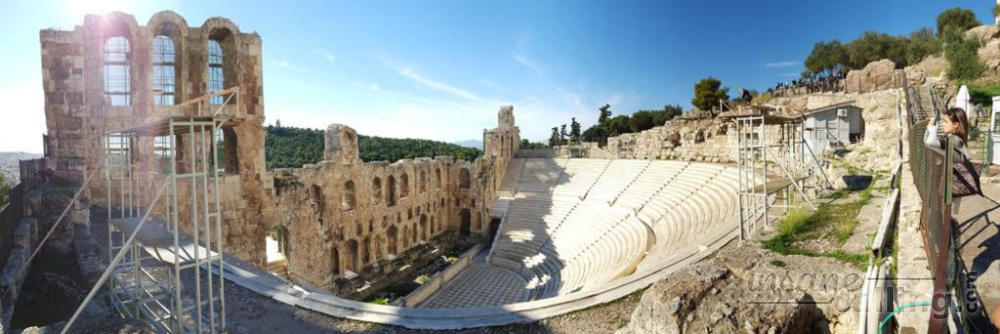Athens City Trip Itinerary: Day 2
After being better equipped to understand the Acropolis from the visit to the Acropolis museum the day before, we ventured to the Acropolis the next morning. Acropolis is the name of the former settlement and the hill where several monuments of interest are perched. The most important of these monuments is the Parthenon which might have been the image that conjures up in your head when you think of Athens. Parthenon was originally a temple for Athena, the goddess of Athens and built in 432 BC. It is important to think of this not just as a mere number or period in time. The structure is 2500 years old. To put it into perspective, the temple complex of Angkor Wat (Cambodia) was built in the 12th century and Machu Picchu (Peru) is from the 15th century. The other major world structures older than the Acropolis temples are the Egyptian Sphinx and Stonehenge (4500 years old) and a number of temples in Malta.
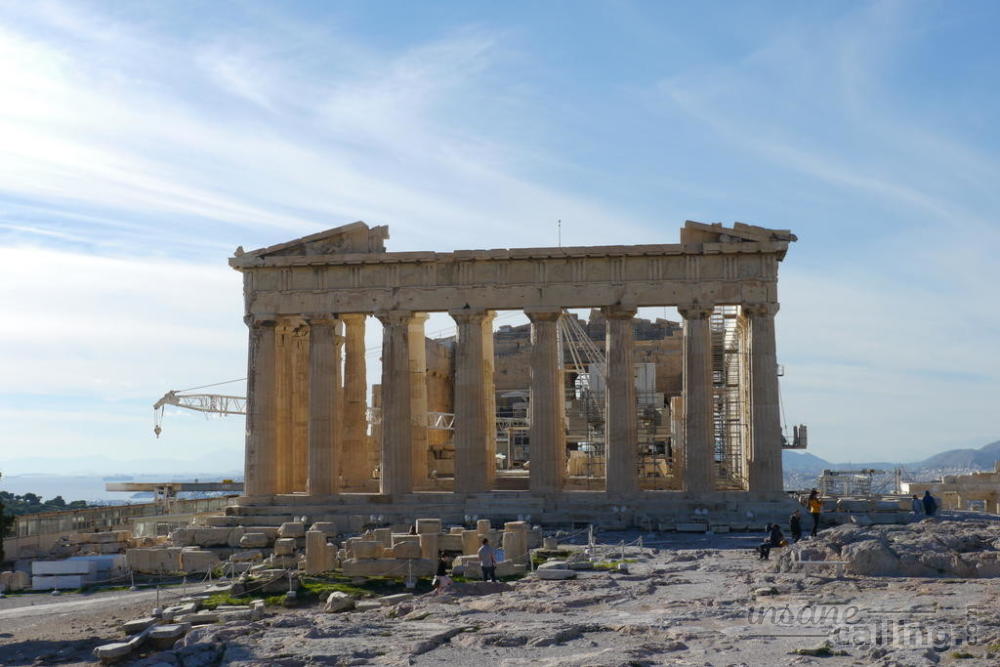
The restoration of the Acropolis seems like a very long process. We still saw archaeologists brush mud away from marble foundations and several areas were beyond tourist access. Many temples have gone through various phases of restoration, some even to correct errors from previous restorative interventions. When we visited, the Acropolis was going through yet another such phase and we couldn’t enter any monument. We could only be dwarfed by the enormity of the columns and the details of the sculptures that remain.
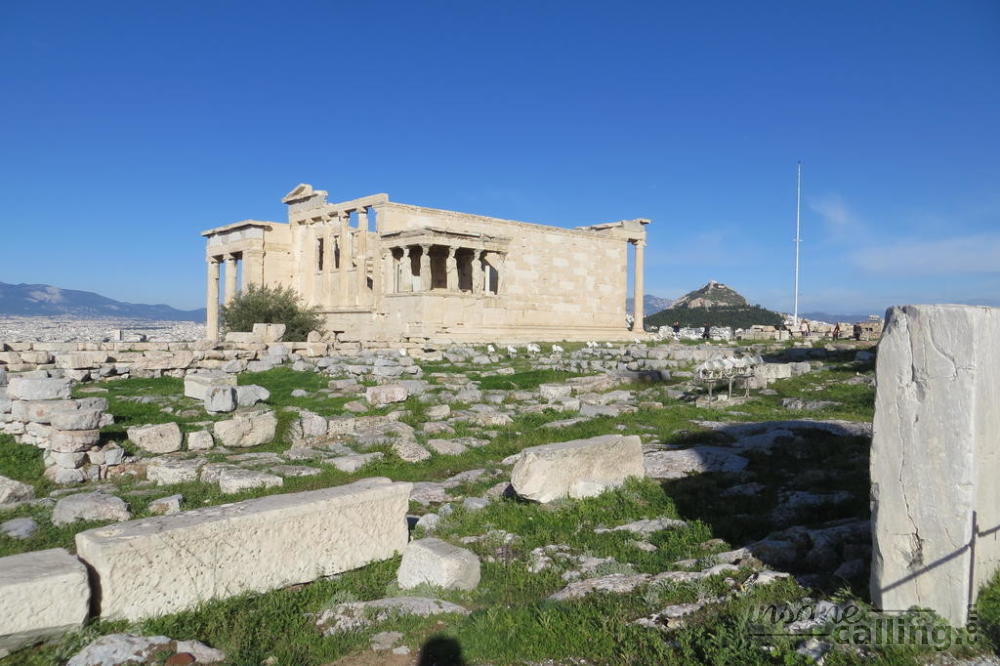
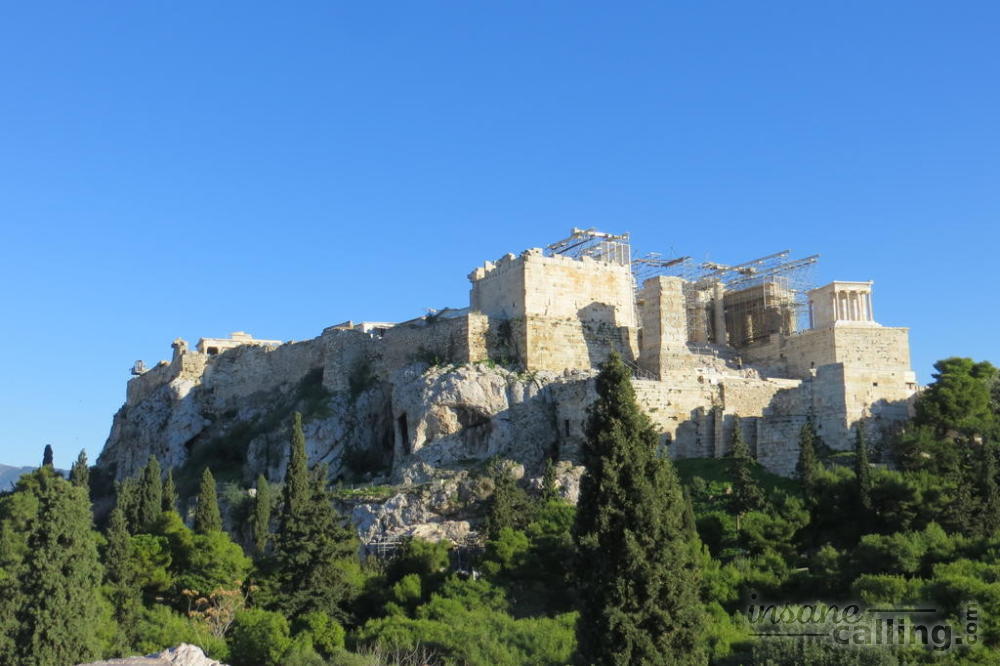
The Parthenon was looted, bombed, converted to a church and to a mosque, its statues were damaged barbarically and at times statues were methodically broken off, stolen and now lie in museums around the world! It has been desecrated by the Persians, the Venetians, the British and perhaps many more. That’s how much injury the beautiful temple has suffered and that’s why it lies as ruins in front of our eyes. It makes you wonder what a piece of marvel it must have been in it’s time before all the attacks.
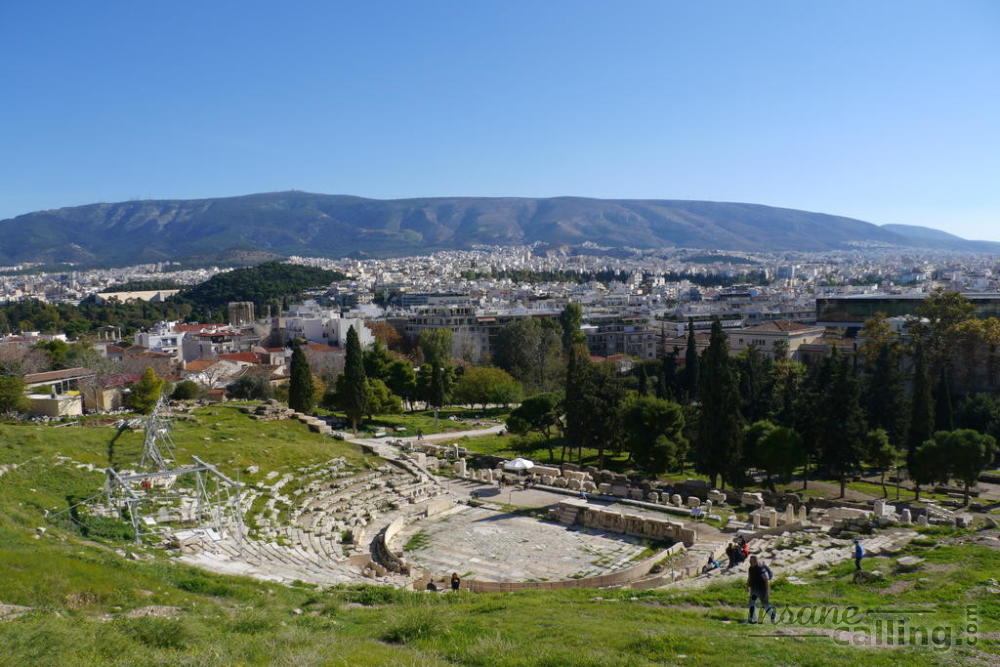
Moving on, other memorable monuments on the slopes of the Acropolis hills are the two amphitheatres – the Theater of Dionysus and the better preserved Odeon of Herodes. The latter was built by Herodes Atticus in 162 AD in memory of his wife Rhegilla. Nowadays it serves as a majestic venue for performances mainly during the Athens’ Festival held in summer each year.
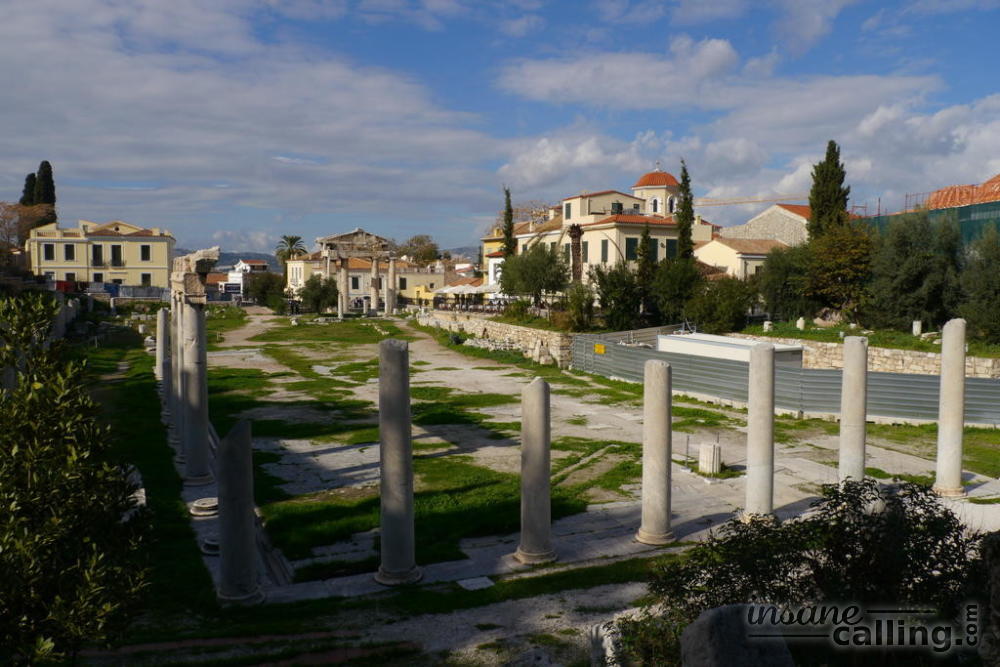
Several other ruins such as Roman Agora, Tower of Winds, Hadrian’s Library dot the base of the Acropolis hill. There is little remaining of them except some foundation stones, walls and a couple of impressive and enormous pillars. The Roman Agora replaced the Ancient Agora as commercial and administrative centre from the 3rd to the 19th century. The Tower of Winds was built by a Macedonian astronomer. It used to have a weather-vane to indicate the direction of the wind. It also housed a water clock which was operated by water flowing down from the Acropolis. Hadrian’s Library got its name from the Roman emperor Hadrian who donated it to the city. The central courtyard of the Hadrian’s Library houses an unusal church. It’s a so called tetraconch church, where the basic groundplan follows that of Greek cross. Today only the arched foundations and some pillars remain standing.
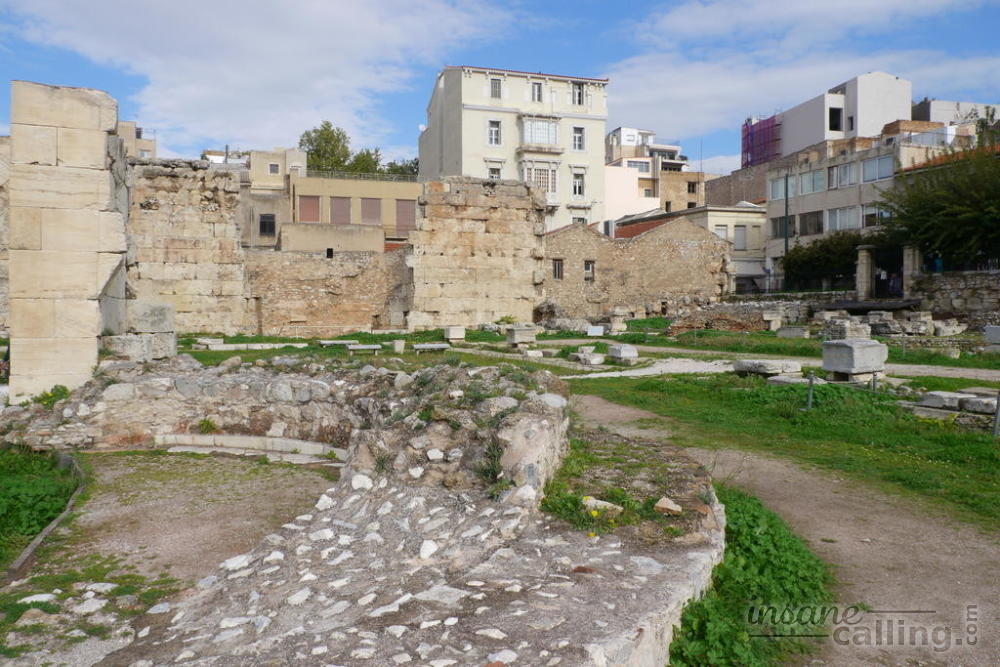
We continued south east and passed by the Temple of Olympian Zeus. The gigantic columns that now remain were once part of the largest temple in Greece. It was dedicated to Zeus, king of the Olympian gods.
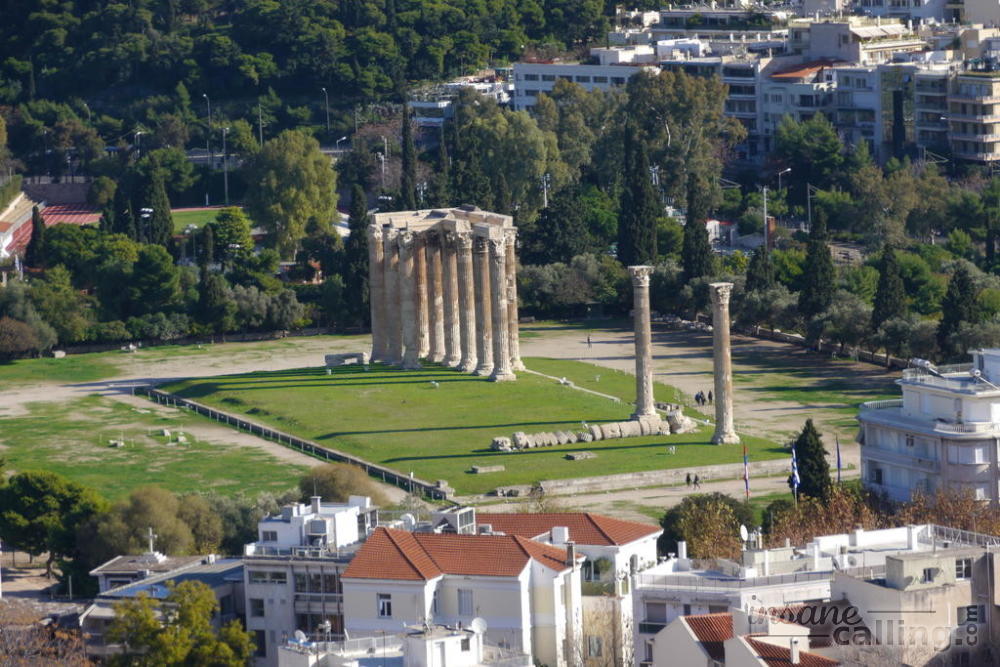
The sights close at 3pm. So start your day early. The 12 Euro Acropolis ticket includes entrance to all the ruins as well and is not limited to one day allowing you to break the monotony and walk the streets or visit a museum in between all the ruins-sight-seeing.
Have a look at the Panathenaic Stadium which is where the 1896 Olympic Games were held. It is an impressive stadium made fully of marble. Return to the center by strolling through the National Gardens.
